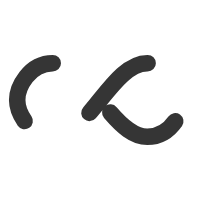Introduction to Online Trading Platforms
In the fast-paced world of finance, online trading platforms stand as powerful gateways for both novice and experienced investors aiming to explore and thrive in the stock market. These platforms offer users the ability to engage directly with financial markets, providing tools for buying and selling stocks, bonds, mutual funds, and other investment vehicles from the comfort of their homes or mobile devices.
For beginners, understanding the function and potential of trading platforms is crucial. Essentially, a trading platform is a software application that connects investors with financial markets. The platform’s primary purpose is to facilitate the execution of trades (buying and selling) while providing a suite of tools to help users analyze market data, manage their investment portfolios, and execute trading strategies. This digital convenience opens up a realm of possibilities for personal finance and investment management that was once the exclusive domain of professional brokers.
Furthermore, the democratization of trading through these platforms means that anyone with an internet connection can start investing, regardless of prior experience. This is particularly empowering for new investors, who can leverage integrated educational resources to gradually enhance their understanding of the markets and develop effective trading habits. Whether it’s planning for retirement, saving for a big purchase, or simply growing wealth, online trading platforms offer an accessible path to achieving those financial goals.
In the next sections, we will delve into the key features that these platforms offer and compare some of the most popular platforms available today. This guide will help you identify the right tools and resources provided by these platforms to make informed decisions and strategically grow your investments.
Overview of Trading Platform Features
Trading platforms come equipped with a variety of features designed to assist users in navigating the complex world of finance. Here’s a breakdown of some essential tools and functionalities commonly found in these platforms:
- Real-Time Market Quotes: Access to up-to-date market data is crucial for effective trading. Most platforms provide real-time quotes for various securities, enabling traders to make timely decisions based on the most current market conditions.
- Charting Tools: Visual representations of market data help clarify trends and patterns. Advanced charting tools allow users to analyze historical price movements and apply technical indicators, which are vital for developing trading strategies.
- Order Execution: Platforms facilitate various types of order executions including market orders, limit orders, and stop-loss orders. This flexibility helps traders manage their risk and execute trades at desired price points.
- Automated Trading: Some platforms offer automated trading systems that enable traders to set specific criteria for trades, which are automatically executed when those conditions are met. This is especially useful for those who cannot monitor the markets continuously.
- Risk Management Tools: Tools such as stop-loss orders and alerts help manage and mitigate risks associated with trading. They are indispensable for protecting investments from significant losses.
- Educational Resources: Many platforms provide tutorials, webinars, and articles to help beginners learn the basics of trading and more advanced concepts. These resources are crucial for ongoing education and skill enhancement.
- Mobile Trading: With the ubiquity of smartphones, many platforms have mobile apps that offer full functionality. This means traders can manage their portfolios, execute trades, and check market updates from anywhere at any time.
- Customer Support: Robust customer support is essential, especially for beginners who may need guidance on platform features or trading strategies. Leading platforms typically offer support through various channels including live chat, phone, and email.
Understanding these features and how to effectively use them is the first step in becoming a proficient trader. In the following sections, we will compare several popular platforms to help you select one that best fits your trading style and financial goals. We will look at their specific offerings, from fees and investment options to user interface and customer support, highlighting the pros and cons of each.
Comparison of Popular Trading Platforms
When venturing into the world of online trading, one of the first steps is choosing the right platform. Here, we compare four widely-used trading platforms: E*TRADE, TD Ameritrade, Robinhood, and Fidelity. Each platform has unique features suited for different types of investors.
E*TRADE
Features and Benefits:
- Comprehensive Tools: E*TRADE offers a rich array of tools for research, analysis, and trading. It’s particularly well-known for its OptionsHouse, a robust platform for options trading.
- Educational Resources: Provides extensive learning materials, including free webinars, tutorials, and articles that cater to both beginners and advanced traders.
- Fees: No commission fees for stock, options, and ETF trades. Options contracts have a small fee per contract.
Drawbacks:
- The platform can be overwhelming for absolute beginners due to the vast range of features and data.
TD Ameritrade
Features and Benefits:
- Advanced Technology: Thinkorswim, TD Ameritrade’s trading platform, is highly regarded for its advanced tools and features that are suitable for serious traders.
- Investment Selection: Offers various investment options from stocks to futures and Forex.
- Educational Resources: Excellent educational support with free courses, videos, and live workshops.
Drawbacks:
- Higher broker-assisted trade fees may be a concern for new traders who feel they need more personal guidance.
Robinhood
Features and Benefits:
- User-Friendly Interface: Known for its minimalist and easy-to-use interface, it is ideal for beginners.
- Commission-Free Trading: Offers truly commission-free trades, making it economically viable for those with smaller portfolios.
- Mobile Experience: Exceptional mobile app that allows for easy online trading.
Drawbacks:
- Limited research tools and educational resources can significantly disadvantage those looking to deepen their trading knowledge.
Fidelity
Features and Benefits:
- Research and Data: Offers comprehensive research tools and real-time data free of charge.
- Fees: No commission fees for stock and ETF trades and a low fee for options trading.
- Customer Service: Known for excellent customer service with extensive help and support options.
Drawbacks:
- The platform’s interface may not be as intuitive as some newer platforms, potentially posing a challenge for those not tech-savvy.
Choosing the Right Trading Platform (600 words)
Selecting the right trading platform is a crucial decision to significantly influence your trading success. Here are several factors to consider:
- Investment Goals: Understand whether you’re trading for quick profits, long-term growth, options trading, or diversification. Match your goals with the platform’s strengths.
- Fees: Consider how the fees associated with different platforms affect your investment strategy, especially if you plan on making frequent trades.
- Ease of Use: Particularly important for beginners, the ease of navigating the platform’s interface can affect your trading experience and success.
- Educational Resources: Educational materials can be crucial for traders who are new to the market. Look for platforms offering comprehensive training tools and resources.
- Customer Support: Reliable customer support can be vital, especially when you encounter trades or platform navigation issues.
- Security: Ensure the platform has strong security measures to protect your account and personal information.
Guide to Using Trading Platforms
Once you’ve chosen a platform, the next step is understanding how to use it effectively. Here’s a basic guide:
- Setting Up Your Account:
- Complete the registration process, which may include identity verification and linking your bank account.
- Familiarize yourself with the platform’s dashboard and settings.
- Placing Trades:
- Market Orders: Buy or sell securities at the current market price.
- Limit Orders: Set a specific price you want to buy or sell.
- Stop Loss Orders: Automatically sell securities when they reach a certain price to minimize potential losses.
- Reading Market Data:
- Charts: Learn to read different charts, such as line charts, bar charts, and candlestick charts.
- Indicators: Understand basic indicators like moving averages, RSI (Relative Strength Index), and MACD (Moving Average Convergence Divergence).
- Using Tools:
- Utilize tools provided by the platform for better decision-making. These might include calculators, forecast tools, and risk analysis tools.
- Continual Learning:
- Take advantage of educational resources. Regularly update yourself with new features and trading strategies.
By following these guidelines and continuously learning, you can enhance your trading proficiency and potentially increase your chances of success.






